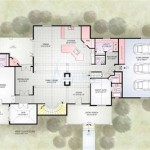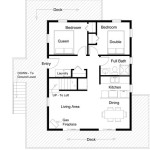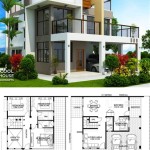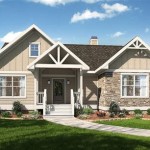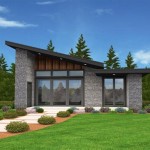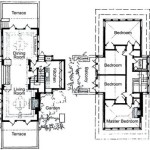Home Design Plans: A Comprehensive Guide
Home design plans serve as the roadmap for constructing or renovating a dwelling. These plans detail every aspect of the project, from the overall layout and dimensions to the precise placement of electrical outlets and plumbing fixtures. A well-executed home design plan minimizes construction errors, controls costs, and ensures that the finished product aligns with the homeowner's vision and functional requirements.
The complexity of a home design plan varies significantly depending on the scope of the project. A simple interior renovation might require a relatively straightforward plan, while constructing a new house from the ground up necessitates a highly detailed and comprehensive set of documents. Regardless of the project’s scale, the fundamental purpose of the plan remains the same: to provide clear and unambiguous instructions for the construction team.
The following sections delve into the essential components of home design plans, their importance, and how to effectively utilize them in your project. Understanding these elements is crucial for both homeowners and professionals involved in the design and construction process.
Understanding the Essential Components of a Home Design Plan
A complete set of home design plans typically comprises several distinct drawings, each focusing on a specific aspect of the building. These drawings work together to provide a holistic view of the project and ensure that all elements are properly coordinated. Understanding these components is crucial for anyone involved in the building or remodeling process.
Site Plan: The site plan illustrates the location of the house on the property. It shows property lines, setbacks, easements, driveways, walkways, landscaping, and any other relevant features of the surrounding environment. This plan is essential for ensuring compliance with local zoning regulations and building codes regarding placement and size of the structure.
Floor Plans: Floor plans are perhaps the most recognizable element of a home design plan. They provide a bird's-eye view of each floor of the house, showing the layout of rooms, the location of walls, doors, windows, stairs, and built-in features. Floor plans also include dimensions, indicating the size of each room and the overall dimensions of the house. Furniture placement may also be included as a preliminary design consideration.
Elevations: Elevations are orthographic projections that depict the exterior of the house from each side. They show the appearance of the walls, roof, windows, doors, and other architectural details. Elevations provide a visual representation of the house's style and character. They are critical for visualizing the aesthetics of the finished project and ensuring that the design meets the homeowner's expectations.
Sections: Sections are cut-through views of the house that reveal the internal structure and construction details. They show the relationships between different building components, such as walls, floors, and roofs. Sections are particularly useful for understanding the vertical dimensions of the house and the way in which different elements are connected. They often include details regarding insulation, framing, and other structural elements.
Details: Detail drawings provide enlarged views of specific building components or construction assemblies. They show the materials, dimensions, and construction methods used to create these elements. Detail drawings are essential for ensuring that the construction team understands how to build specific parts of the house correctly. Examples include window and door details, wall sections showing layers of construction, and connections between different structural elements.
Electrical Plans: These plans illustrate the location of electrical outlets, switches, lighting fixtures, and other electrical components. They also specify the wiring methods, circuit breaker sizes, and other electrical requirements for the house. Electrical plans are crucial for ensuring the safety and functionality of the electrical system.
Plumbing Plans: Plumbing plans show the location of water supply lines, drain lines, and plumbing fixtures, such as sinks, toilets, and showers. They also specify the pipe sizes, materials, and routing of the plumbing system. Plumbing plans are essential for ensuring the proper functioning of the plumbing system and preventing water damage.
HVAC Plans: These plans illustrate the layout of the heating, ventilation, and air conditioning (HVAC) system. They show the location of the furnace, air conditioner, ductwork, and thermostats. HVAC plans are essential for ensuring that the house is properly heated, cooled, and ventilated.
Structural Plans: Structural plans detail the structural components of the house, such as the foundation, framing, and roof. They specify the size and type of structural members, as well as the connections between them. Structural plans are essential for ensuring the structural integrity and safety of the house.
The Importance of Accurate and Detailed Home Design Plans
The accuracy and level of detail in a home design plan have a direct impact on the success of the building or renovation project. Inaccurate or incomplete plans can lead to costly errors, delays in construction, and ultimately, a final product that does not meet the homeowner's expectations. These issues can significantly increase building costs and cause undue stress.
Minimizing Construction Errors: Detailed plans provide clear and unambiguous instructions for the construction team, reducing the likelihood of misunderstandings and errors. By clearly specifying dimensions, materials, and construction methods, the plans help to ensure that the house is built according to the intended design. This, in turn, saves time and money by preventing rework and costly corrections.
Controlling Costs: A well-defined plan allows for accurate cost estimation. Contractors can use the plans to determine the quantity of materials needed and the amount of labor required for each phase of the project. This allows the homeowner to establish a realistic budget and avoid unexpected expenses. Moreover, detailed plans can help to identify potential cost-saving opportunities during the design phase.
Ensuring Compliance with Building Codes: Home design plans must comply with local building codes and zoning regulations. These codes are in place to ensure the safety and well-being of the occupants and the surrounding community. An architect or designer with knowledge of the local codes can ensure that the plans meet all the necessary requirements, avoiding potential legal issues and delays in obtaining building permits. Furthermore, code compliance ensures structural integrity and fire safety.
Facilitating Communication: Home design plans serve as a common language for all parties involved in the project, including the homeowner, architect, contractor, and subcontractors. By providing a clear and concise representation of the design, the plans facilitate communication and collaboration, ensuring that everyone is on the same page. This is particularly important in complex projects with many different stakeholders.
Streamlining the Permitting Process: Obtaining a building permit is a crucial step in any construction or renovation project. A complete and accurate set of home design plans is essential for obtaining the necessary permits from local authorities. The plans demonstrate that the project meets all the applicable building codes and zoning regulations. A well-prepared set of plans can expedite the permitting process and avoid costly delays.
Enhancing Visualization: Home design plans, especially when combined with 3D renderings or virtual reality models, allow homeowners to visualize the finished project before construction begins. This is particularly helpful for understanding the spatial relationships between different rooms, the flow of traffic, and the overall aesthetic of the house. Early visualization helps homeowners to identify potential design flaws or modifications before construction commences, saving time and money on revisions.
Utilizing Home Design Plans Effectively
Simply having a set of home design plans is not enough to guarantee a successful project. It is equally important to know how to utilize the plans effectively throughout the design and construction process. This requires careful planning, attention to detail, and open communication among all parties involved.
Reviewing the Plans Thoroughly: Before construction begins, it is essential to carefully review the plans with the architect or designer and the contractor. This is an opportunity to ask questions, clarify any ambiguities, and identify any potential issues. The homeowner should also verify that the plans accurately reflect their vision and functional requirements for the house. This review process is a crucial step in preventing misunderstandings and costly errors later in the project.
Using the Plans as a Reference During Construction: The home design plans should be readily available on the construction site and used as a reference by the construction team throughout the building process. The contractor should ensure that all work is performed in accordance with the plans and that any deviations are discussed and approved by the architect or designer and the homeowner. Regular site visits and inspections are also essential to ensure that the construction is progressing according to plan.
Documenting Changes and Revisions: During construction, it is common for unexpected issues to arise or for the homeowner to request changes to the design. It is crucial to document all changes and revisions to the plans and to ensure that all parties are aware of the modifications. This can be done through formal change orders, which should be signed by the homeowner, the architect or designer, and the contractor. Maintaining accurate records of all changes is essential for resolving disputes and ensuring that the final product meets the homeowner's expectations.
Maintaining As-Built Drawings: As-built drawings are a set of updated plans that reflect the actual construction of the house, including any changes that were made during the building process. These drawings are essential for future maintenance, repairs, and renovations. They provide a record of the location of all building components, including electrical wiring, plumbing lines, and HVAC ductwork. As-built drawings can save time and money by making it easier to locate and access these components when necessary.
By understanding the components of home design plans, recognizing their importance, and utilizing them effectively, homeowners can ensure that their building or renovation project is a success. Careful planning, attention to detail, and open communication are essential for achieving the desired outcome and creating a home that meets their needs and preferences.
The selection of an architect or designer is crucial in establishing a strong foundation for any home construction project. These professionals offer the technical expertise and creative vision required to translate the homeowner's desires into a tangible design. The collaboration between homeowner and architect facilitates the creation of a building that adheres to building regulations and meets the homeowner's functional requirements.

Simple 3 Room House Plan S 4 Nethouseplans Building Plans Designs With Bungalow Floor

Small House Plans Popular Designs Layouts

House Plans How To Design Your Home Plan

Cedar Home Plan 1792 Square Feet

Simple House Plans Blog Homeplans Com

House Plans With Photos

House Plans How To Design Your Home Plan

Small House Plans We Love Houseplans Blog Com

2 Level House Plans Distinctive Homes Double Y

Small Home Plan With 3 Bedrooms House Floor Plans Bungalow Exteriors



